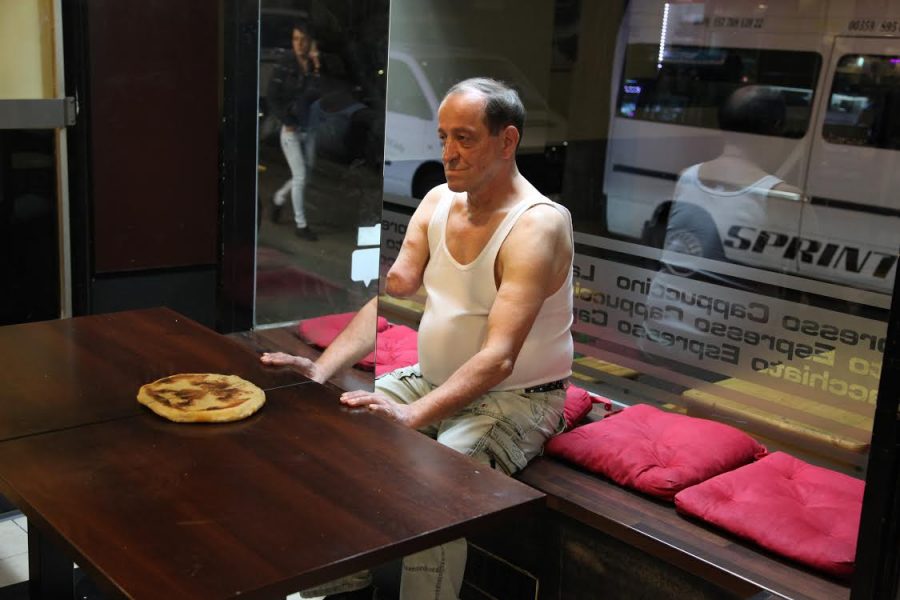Block Museum exhibition explores loss, trauma
In Kader Attia’s film essay “Reflecting Memory,” the artist repairs an amputee’s lost arm using a mirror to project a reflection of his other arm. Attia spent time researching the themes of loss and trauma in Northwestern’s Africana collection for his new exhibit at the Block Museum, where the film will be on view.
January 18, 2017
French-Algerian artist Kader Attia has traveled all around Africa studying culture, history and presenting exhibitions. Now, Attia will make his solo debut in the Midwest at the Block Museum of Art with “Reflecting Memory,” an exhibition opening Saturday.
Art history graduate student Antawan Byrd said he reached out to Attia when Block administrators began looking for an artist to commission and create pieces based on research conducted at Northwestern.
Lindsay Bosch, marketing and communications manager at Block, said Attia’s artwork is tied to the Northwestern art community because he worked closely with the University throughout the creative process. She said Attia spent the last two years doing research at Northwestern’s Herskovits Library, which holds the largest Africana collection in the world.
“It’s a great pleasure to work with an artist from start to finish on their show,” Bosch said. “It is different from other things we have done because it is a commission created for and inspired by NU and for this particular space.”
Attia’s exhibition includes three parts: collage, sculpture and a film essay, each focusing on different topics and themes.
“He brings together neuroscience, history, philosophy, art history and asks questions about how we can make connections across cultures,” said Kathleen Berzock, Block’s associate director of curatorial affairs.
The film includes interviews with Northwestern faculty members who are familiar with the topics Attia addresses — including theater Prof. Harvey Young and art history Prof. Huey Copeland — Berzock said. The way he weaves NU resources into his pieces is a great example of how well he works interdisciplinarily and synthesizes the information he finds, Berzock said.
The exhibition explores the themes of trauma, loss and repair through various topics that Attia found interesting in his time at the Herskovits Library, she said. These topics include water, architecture, amputations and the neuroscience of conditions like phantom limb and mirror neurons.
These conditions have a direct connection with the trauma of loss, Berzock said. Attia is interested in loss and trauma in global history caused by genocide, slavery and racism, she added. Attia’s film touches on the Holocaust, slavery and the Armenian genocide, Byrd said.
Attia builds his pieces to convey the repair and healing after such losses, Byrd said. Some of his films depict people with amputated arms who appear to have both arms when a mirror is optimally placed to reflect their existing limbs.
“He’s making collages, so he’s cutting out these disparate paper elements then suturing them together to make something whole,” Byrd said. “He cuts a desk in half; he cuts a typewriter in half then repairs them with a mirror.”
But Attia’s work does not just stop at individual loss and repair, Berzock said.
“Overall, this narrative forces us to think about the repair and healing after different sorts of trauma over time and the similarities and differences in the responses that (global tragedies) generate,” Byrd said.
Email: [email protected]
Twitter: @gabbygrossman13


